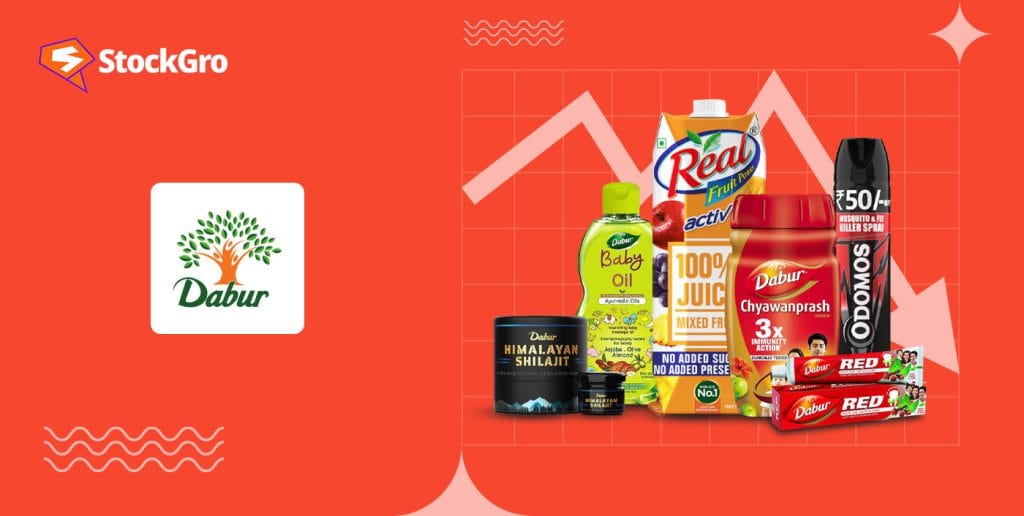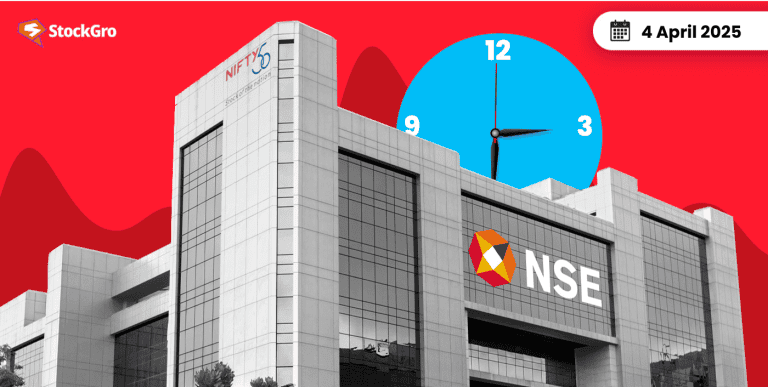
Dabur India has faced a sharp 7% drop in its share price, hitting a 52-week low, following the announcement of its Q4FY25 business update. Despite strong performance in international markets, the domestic FMCG sector has encountered significant headwinds. Let’s break down the key factors behind this slump and analyze what investors should expect moving forward.
What caused the drop in Dabur’s share price?
Dabur India’s share price fell to ₹459.65 on April 3, 2025, its lowest point in the past year. This decline came after the company reported a subdued business update for the fourth quarter of FY25. The company pointed to several challenges in its domestic FMCG business, including weak demand trends, the impact of inflation on margins, and sluggish urban market growth.
| Factor | Details |
| Share price drop | 7.2% drop to ₹459.65 |
| 52-week low | ₹459.65 |
| 52-week high (Sept 2024) | ₹672 |
| Price drop from 52-week high | 31% |
Weak domestic performance
One of the biggest contributors to the decline in Dabur’s share price is the weak demand in the domestic FMCG sector. While Dabur has been performing well in its international markets, domestic growth has been lacklustre. Key factors include:
- Delayed and truncated winter season: The shorter winter season impacted seasonal sales, especially for products in the winter portfolio.
- Weak urban demand: Sluggish consumer spending in urban markets weighed down the performance of several FMCG categories.
- Pressure in general trade: While modern trade, e-commerce, and quick commerce channels maintained growth, the traditional general trade sector faced challenges.
| Domestic Sector Impact | Details |
| Urban demand | Sluggish growth in urban markets |
| Winter season | Impacted by a delayed winter season |
| General trade | Under pressure |
| FMCG segment growth | Likely to decline in mid-single digits |
Strong international performance
On a brighter note, Dabur’s international business, particularly in markets like the Middle East and North Africa (MENA), Egypt, and Bangladesh, has been performing well. These markets are expected to continue seeing strong demand, with Dabur projecting robust double-digit growth in constant currency terms.
Also read: List of FMCG Stocks in India 2025
| International Sector Impact | Details |
| Key markets | MENA region, Egypt, Bangladesh |
| Projected growth | Double-digit growth in constant currency terms |
| Impact on share price | Positive contribution to overall performance |
Margin pressures
Alongside weak domestic growth, Dabur also faces margin pressures. The company expects operating profit margins to contract by 150-175 basis points year-on-year, largely due to inflationary pressures and operating deleverage. This margin squeeze adds to the challenges the company is facing in the short term.
| Margin Impact | Details |
| Operating margin drop | 150-175 bps YoY contraction |
| Reasons for drop | Inflation and operating deleverage |
Outlook for Q4FY25
Dabur India’s consolidated revenue for Q4FY25 is expected to remain flat compared to the previous year. This is a direct result of weak volume growth in the FMCG segment. While the company continues to focus on strategic investments and operational efficiencies to drive long-term growth, the immediate outlook remains challenging.
You may also like: A strong FMCG growth projection for 2025 results 17%
| Q4FY25 Outlook | Details |
| Revenue growth | Expected to remain flat |
| Operating margin | Expected to contract by 150-175 basis points |
The company’s response
Despite the ongoing challenges, Dabur is committed to long-term growth. The company aims to tackle the current demand pressures by focusing on improving its market strategies, investing in brand building, and enhancing operational efficiency. Additionally, Dabur is optimistic that the Union Budget’s consumption incentives will help stimulate the FMCG sector, offering hope for a recovery.
| Company Strategy | Details |
| Focus areas | Brand investments, go-to-market strategies, operational efficiency |
| Union Budget incentives | Expected to stimulate demand in the FMCG sector |
Stock performance and market reaction
Dabur’s stock has seen significant fluctuations recently. In the last year, the stock has dropped by 13% and is currently down over 31% from its 52-week high. In 2025 alone, Dabur’s shares have fallen by nearly 9%, reflecting investor concerns about the company’s short-term growth outlook.
| Stock Performance | Details |
| 1-year decline | -13% |
| YTD decline (2025) | -9.62% |
| 3-month decline | -12.04% |
| 1-month decline | -6% |
Despite the weak Q4 update, analysts like InCred Equities and Motilal Oswal remain cautiously optimistic about the company’s long-term potential. They expect Dabur to continue growing in international markets, with some analysts even suggesting a potential upside in stock price if the company’s strategies pay off.
You may also read: FMCG stocks drop as demand concerns weigh on sector
Future outlook
Looking ahead, Dabur’s growth prospects hinge largely on its ability to bounce back in the domestic FMCG segment. The company continues to invest in its brands and expand its international reach, which should provide support in navigating the current tough market conditions. However, the real test will be whether the company can overcome the domestic challenges and achieve growth in the coming quarters.
| Future Outlook | Details |
| Focus areas | Domestic FMCG recovery, international growth |
| Challenges | Weak urban demand, inflationary pressures |
| Opportunities | International expansion, FMCG sector recovery |

